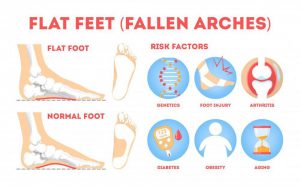FALLS DON’T HAVE TO BE AN UNavoidable part of growing older.
Though Falls Prevention Awareness Day isn’t until September 22 this year, it’s crucial to avoid falls every day, especially since May is Older Americans Month. In the United States, falls are the top cause of fatal and nonfatal injuries among persons 65 and older. Every year, they account for more than 3 million ER visits, 900,000 hospitalizations, and nearly 30,000 fatalities. Every year, one in every three persons over the age of 65 suffers a major setback (Prevention). Even more concerning, between 2007 and 2016, the death rate from falls increased by more than 30% (from 47 to 62 per 100,000 persons). They’re also the greatest cause of traumatic brain injury, and they’re responsible for more than 95 percent of hip fractures (Everyday Medical). These injuries might make it difficult for a person to move around, do daily tasks, or live independently.

Falling and Its Effects
Many people who fall develop scared of falling, even if they are not hurt. A person’s daily activities may be reduced as a result of their dread. A person’s strength deteriorates as they become less active, increasing their risk of falling.
Fall injuries and deaths have a significant economic impact, costing over $50 billion in direct medical costs each year. Fall injuries are among the top 20 most costly medical diseases, with government-funded programs like Medicare and Medicaid covering over 75% of the expenditures. We can expect 49 million falls, 12 million fall injuries, and nearly 60,000 fall-related deaths every year by 2030 as the American population continues to age, with 10,000 individuals turning 65 every day (AARP).
FALLS DON’T HAVE TO BE AN UNavoidable part of growing older.
A Thousand Pounds of Cure Is Worth An Ounce of Prevention
Falls are not a natural part of the aging process. There are numerous services and routines available to assist older individuals in being safe and independent for as long as possible. Fall prevention and reduction decreases healthcare costs, improves health, and promotes independence. Simply said, the best approach to avoid falling is to maintain and even improve one’s balance.
FALLS DON’T HAVE TO BE AN UNavoidable part of growing older.
Balance is an important survival ability, but it is also fleeting. After we become 30, the muscles that allow us to stand tall gradually deteriorate. How well we keep our equilibrium in our forties and fifties can safeguard us as we get older. The following are the greatest techniques to maintain and improve your balance:
Examine your eyesight once a year – Our vision deteriorates as we become older. If corrective glasses are required, it is critical that you have them. Without good vision, one’s sense of balance may be thrown off.
Standing on one leg helps to strengthen the core and lower-body muscles that keep you steady on your feet. You can start with 5–10 seconds per leg and work your way up from there. When you can hold this stance for 30 seconds on each side, you can add weights, close your eyes, or stand on less firm surfaces like a couch cushion to make the workout more challenging.
Take an Exercise Class – Tai Chi practitioners meet the American Fitness Standards in the 90th percentile, and a research indicated that Tai Chi practitioners were less likely to fall than those who participated in simple stretching programs or made other lifestyle adjustments. Yoga has also been proven to improve ankle flexibility and confidence in women 65 and older who participated in twice-weekly yoga lessons for 9 weeks (Prevention).
Sleep Deprivation – Sleep deprivation can delay reaction time, which can affect your ability to prevent or “catch yourself” from falling. The recommended amount of sleep per night is usually around 7+ hours.
Make Your Home More Secure – A safer home is one that improves the overall functionality of the living space. This includes: I installing hand rails where assistance is required, (ii) making sure there is nothing loose or slippery on the floor (such as area rugs) that could cause tripping, and (iii) arranging furniture to maximize walking space for maximum mobility.
Always put on the proper footwear.
Wearing the right shoes can help improve balance, particularly in elderly persons who may have mobility and balance concerns. This is a guideline that applies 24 hours a day, seven days a week, whether you’re out running errands or at home making dinner. The appropriate footwear can strengthen and support your foot and arch, improving your overall balance and mobility.
Always squeeze on both sides of the heel area when choosing a shoe to increase balance to ensure the heel is rigid and won’t collapse. Also, bend the shoe to see if the toes are flexible. The toe box portion of the shoe shouldn’t bend too much, but it also shouldn’t be excessively stiff and rigid. Finally, make sure it doesn’t twist in the middle by doing the twist test.
Foot size might alter as a result of natural aging and health changes, so it’s critical to get your feet professionally measured every time you buy shoes. Late in the day, measure both feet and shop for the larger foot. Another helpful advice is to bring the socks you want to wear and try them on in the shoes before you buy them.
Right away, shoes should feel comfy and supportive. If they don’t, breaking them in isn’t going to help. Orthotic inserts can often be used in conjunction with shoes to provide additional support and movement to the foot, as well as additional comfort that the shoe may lack. Muscle weakness, fallen arches, ataxia, gait abnormalities, joint instability, trouble walking, peripheral neuropathy, limb discomfort, arthropathy, and hemiplegia are all signs that foot orthotics are needed for balance. For these circumstances, using a strong supportive orthotic insert can help lower the chance of falling. Today’s Podiatry.
